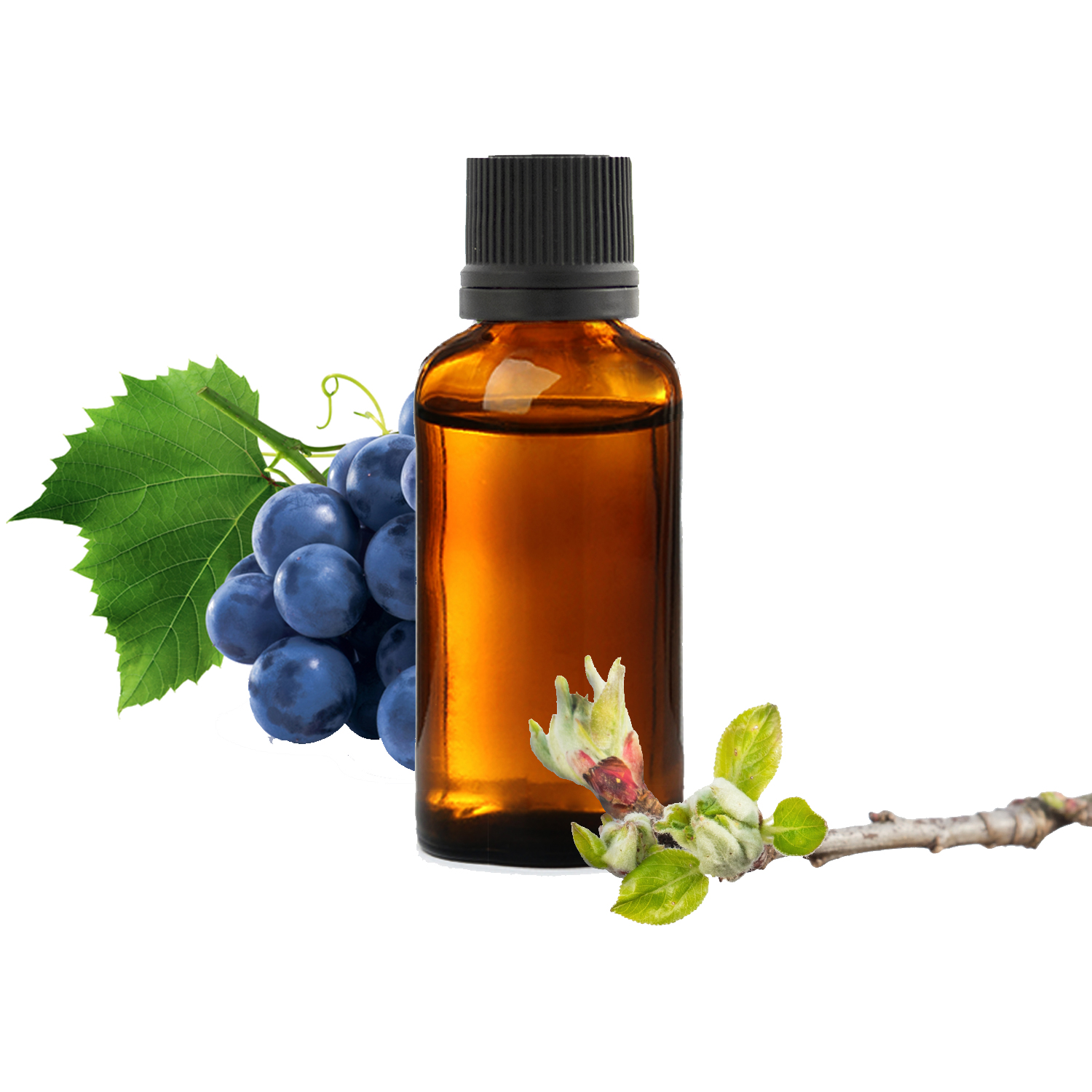
The buds of the vine contain a rejuvenating remedy to relieve all inflammatory pain, at the digestive, venous or even skin level, with great specificity at the joint level all the same. Vine bud macerate will be very suitable for situations of rheumatism, hemorrhoids and painful periods. Latin name: Vitis vinifera. Part used: Fresh buds
This article was updated on 19/07/2023For what problems should it be used?
-
Osteoarticular system ++++ : Arthritis, Osteoarthritis, Fibromyalgia, Lumbago, Osteoporosis, Chronic progressive polyarthritis, Rheumatoid arthritis, Rheumatism, Sciatica
-
Blood and lymphatic system +++ : hemorrhoids, phlebitis, varicose veins
-
Urogenital system +++ : Dysmenorrhea, Endometriosis, Uterine fibroid, Glomerulonephritis, Ovarian cyst, Menopause, Nephritis, Painful periods
-
Digestive system ++ : Colitis, Crohn's disease
-
Cutaneous system ++ : acne, erysipelas, wart
How to use it alone?
Adults and adolescents : 5 to 15 drops per day in a glass of water, divided into 1 to 3 doses during the day depending on the case, 15 minutes before a meal for 3 weeks. Start with 5 drops and increase gradually:
- or one drop per day up to 15,
- i.e. 5 drops the first week, 10 the second and 15 the last.
Children over 3 years old : 1 drop per day for 10 kilos. Start with 1 drop and gradually increase.
Synergistic uses
Osteoarthritis
The Vine and the Cassis form a perfect combo to act against osteoarthritis pain. They can be associated with Scots Pine, regenerating cartilaginous tissues.
Arthritis
For its anti-inflammatory action, Vine can be combined with Cassis. Macerate of buds Silver Birch can also be used to drain tissues.
Colitis
In case of colitis, the Vine can be used with the macerate of buds of Fig tree. They are both anti-inflammatory at the digestive level and Vine acts against autoimmune diseases.
Chronic progressive polyarthritis
The Vine can be used in association with the Cassis for its anti-inflammatory action, and the Scots Pine to regenerate bones and joints.
Ovarian Cyst
If vine bud macerate is useful for limiting the anarchic development of tissues, it can be combined with vine bud macerate. Raspberry bush to act on hormonal regulation.
Uterine fibroids
The Vine can be combined with the macerate of buds of Raspberry bush to act on hormonal regulation, and with bud macerate of Bramble to combat tissue fibrosis.
Endometriosis
Vine helps to act on the autoimmune origin and limit the anarchic development of tissues. It can be used in combination with the Raspberry bush for its hormonal regulating effect.
Main properties
-
anti-inflammatory, draining, protector of the osteoarticular system :
vine bud macerate is the reference for poorly resolved, chronic and recurrent inflammatory conditions. If it is mainly active at the joint level, it also acts on the intestines and at the urogenital level. Finally, it exerts an anti-inflammatory action on the venous and arterial walls, but its action on the circulation remains secondary to the action of its leaves. Repeated inflammation and acidity can lead to a tissue reaction which then creates fiber. Vine buds then act on several levels: they are anti-inflammatory, drain uric acid, promote the fixation of calcium and above all limit the anarchic formation of tissues. They defibrate. Bud macerate thus slows down or even stops the risks of joint and bone deformations, cysts, tumors, fibroids or warts, and slows down the formation of osteophytes.
-
immunomodulating :
vine bud macerate acts as a regulator of processes affecting immune defenses. Combined with its anti-inflammatory action, this therefore provides support for autoimmune disorders, whether digestive, joint, skin or even sarcoidosis.
Precautions for use
- Vine bud macerate is a herbal food supplement. It does not replace a varied diet and a healthy lifestyle. It is important to keep it out of the reach of children and not to exceed the recommended daily dose. Dosages must be adapted for young children.
- Vine bud macerate is authorized for the whole family, except for babies under 3 years old and pregnant women.
- Store away from light and heat in full containers.
What does a good Vine bud macerate look like?
Botanical characteristics
- Latin name: Vitis vinifera L.
- Botanical family: Vitaceae
- Distilled part: fresh buds
Composition
- Composition: Alcohol* 32%, Water, Vegetable Glycerin*, Vine bud extract (Vitis vinifera L.)*.
Organoleptic characteristics
- Appearance: liquid - possible cloudiness
- Color: amber orange
- Odor: characteristic, slightly alcoholic.
- Taste: mild, sweet, alcoholic.
Was this article helpful to you?
Average grade: 4.8 ( 218 votes)
Bibliography
Work : Piterà di Clima, F., & Nicoletti, M. (2018). Summary of gemmotherapy - Scientific foundations of Meristemotherapy. Amyris Editions.
Work : Boistard, S. (2016). Gemmotherapy - Buds for health - Practical and family guide. Terran Publishing.
Work : Andrianne, P. (2011). Treatise on gemmotherapy: Therapy using buds. Amyris Editions.
Work : Halfon, R. (2011). Gemmotherapy - Health through buds. Dangles Editions.
Work : Ledoux, F., & Guéniot, G. (2014). Phytembryotherapy: The embryo of gemmotherapy. Amyris Editions.
Work : Pineau, L. (2019). The great book of gemmotherapy. Leduc.s Éditions.


